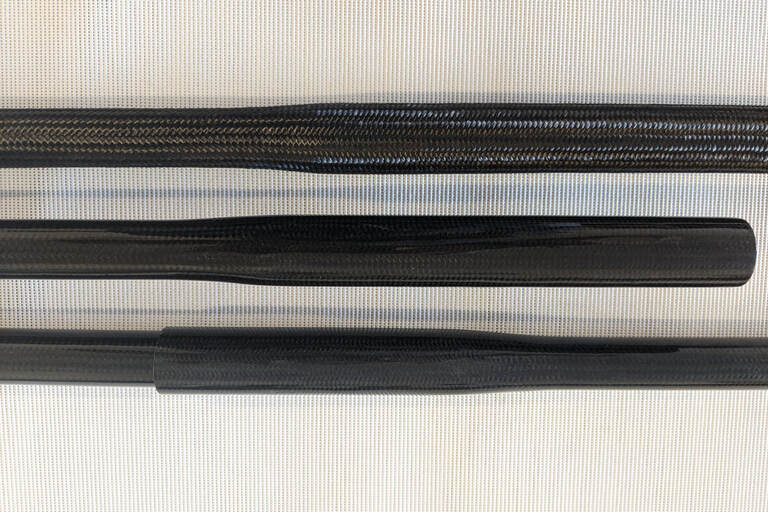How I Got Into Making My Own Sticks
I was looking for the right sailboat awning pole that would breakdown. Stainless is too heavy, aluminum bends, and PVC is too flexible. I thought carbon fiber would be the right fit; it was lightweight, strong, and did not rust. The problem was the cost. It was too expensive, so I decided to make my own. Little did I know, I would spend ten years learning the trade and crafting a new way to make a composite tube. I was fortunate at that time because the USPTO (United States Patent Trademark Office) was allowing you to improve your original patent by adding additional patents to it.
I could not afford the many different types of equipment used in the industry. One being the extraction device that removes the mandrel after the epoxy has been cured. I decided to use a left-in mandrel or liner that has a support rod. This helps to keep the form of the mandrel while curing but is not in contact with the carbon or epoxy. After the tube is cured you simply slide out the rod. The left-in mandrel is a clear tubular thin wall plastic tube. You can not see it. The benefits from this method is not having to wax the mandrel, less stress on the carbon from the extraction, a protection barrier from corrosive or toxic fluids.
Originally I was using a glued ferrule at the breakdown point for connection with another tube. It was not strong enough. I then decided to go with a socket system taken after the PVC bell that is used at the end of the tube. Like PVC, this carbon fiber socket can receive another straight or angled tube. This allows you to make a frame, angle the tube in different directions or connect straight tubing.
I was doing a hand layup to infuse the epoxy and was not getting enough saturation through three different thickness layers of carbon. Needing to come up with a new plan I went with a two part compression mold with an unusual mold release. The mold release does not allow the epoxy to touch the mold and helps draw the epoxy up and over the tubular form. No more cleaning or waxing the mold every time you use it which is gentler on the mold increasing its life span. This new method has less material waste compared to other composite methods, the molds can be attached to make various lengths of tubing and the carbon is cured at room temperature. No expensive high temperature ovens to cure the epoxy that causes the carbon to be brittle, which takes away the toughness of the carbon.
Blackstick® uses carbon fiber braid sleeving from A&P Technology. The braid sleeve is tough and flexible. This patent is based on finding a process that makes it easy to use the dry braid sleeve and can infuse multiple layers and thickness of carbon with epoxy.
I would like to see in the future for Blackstick® to be used as a flexible pipe in the oil and gas industry or an alternative for PVC. The patent covers all the components that are necessary for the pipe. The left-in mandrel or liner would protect the carbon from fluids, the socket for connection, and a method of manufacturing the pipe using braid carbon that can withstand the environmental conditions placed on the pipe by land and sea.








